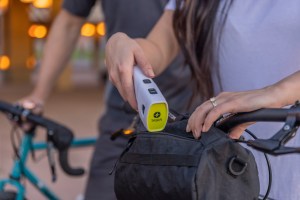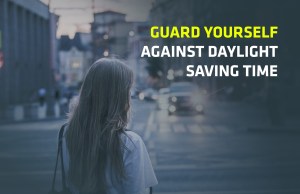On January 1, 2022, Hawaii becomes the 49th state to make it legal to purchase and own a TASER device. (Sorry, Rhode Island, you’re still not allowed.) We have House Bill 891 to thank for it. Governor David Ige signed it into law back in July, repealing a long-time prohibition of the possession or sale of the devices, except for law and conservation enforcement and military members.
Let’s take a look at how we got here, and what this means for personal safety in The Aloha State.
Why Weren’t TASER Devices Previously Allowed?
To understand why TASER devices weren’t legal before, you have to first consider that Hawaii has some of the strictest weapons laws in the country. For a long time, even pepper spray was illegal. You can legally own a gun in Hawaii, but you aren’t allowed to carry it for protection; no concealed carry permits are issued, and you’re only allowed to use your weapon at a shooting range or on specific hunting grounds. So when stun gun devices were invented in the mid-1970s, it was almost inevitable that Hawaii would ban them.
That decision was made in 1976. It wasn’t just ownership that was banned — you also couldn’t sell one, loan one to someone, give one to somebody or even deliver one in Hawaii.
“That, combined with Hawaii not issuing firearms carry permits, left little choices for self-defense,” said Mike Shiwota, an NRA Certified Firearms Instructor and storefront owner who was recently certified to train Hawaiians in TASER device usage. “The legalization of electric guns is a step in the right direction.”
What Changed?
So what led to the law being changed and the introduction of HB 891? It actually started on the complete opposite edge of the country, in Massachusetts. In 2016, the U.S. Supreme Court began debating Caetano v. Massachusetts, a key case in self defense.
Jaime Caetano, a woman who had been repeatedly abused by her ex-boyfriend, threatened him with a stun gun when he aggressively confronted her outside of her work. Under Massachusetts law at the time, it was illegal for her to have the device, and she was arrested, tried and convicted. The case was moved on to the Supreme Judicial Court of Massachusetts which upheld the state law. Sentencing was delayed as Caetano appealed the ruling.
But the case then progressed to the U.S. Supreme Court, which decided Caetano was fully within her second amendment rights to carry the stun gun. They ruled it was part of her basic rights of self-defense, exonerating her before she ever faced a sentence.
“By arming herself, Caetano was able to protect against a physical threat that restraining orders had proved useless to prevent,” the ruling from the U.S. Supreme Court reads. “And, commendably, she did so by using a weapon that posed little, if any, danger of permanently harming either herself or the father of her children.”
The ruling noted that exempting stun guns from second amendment rights, as the Supreme Judicial Court of Massachusetts attempted to do, was “bordering on the frivolous.”
“While stun guns were not in existence at the end of the 18th century, the same is true for the weapons most commonly used today for self-defense, namely, revolvers and semiautomatic pistols,” the ruling continued. “Revolvers were virtually unknown until well into the 19th century, and semiautomatic pistols were not invented until near the end of that century. Electronic stun guns are no more exempt from the Second Amendment’s protections, simply because they were unknown to the First Congress, than electronic communications are exempt from the First Amendment, or electronic imaging devices are exempt from the Fourth Amendment.”
That one ruling, handed down in July 2016, called into question the constitutionality of any state’s ban on TASER devices.
The effects were felt across the United States, and in 2018, Hawaii’s ban on owning such a device was first called into question. Hawaii resident Andrew Namiki Roberts wanted to protect himself and the expensive equipment at his photography business, and had picked out a TASER device to do just that. But he soon learned this wasn’t possible, despite his constitutional right to protect himself.
His only option at the time was pepper spray, which can be more difficult to use than a TASER device and easy to avoid, especially if the attacker is wearing glasses. So instead of settling for pepper spray, he took action. Roberts sued Honolulu’s police chief, the state sheriff and the state attorney general. Thanks to that lawsuit, the Caetano case in Massachusetts, and a handful of other examples around the country, Hawaii wrote up the new bill.
What Does the New Law Say?
The new law, which takes effect January 1, 2022, makes it legal for anyone 21 or older to purchase, own and carry a TASER device. But it’s not as simple as just running into a Bass Pro Shop and buying one from a counter. You will need to be trained, Shiwota says. Here’s how the law reads exactly, in Section 134-C:
No person shall be issued a permit under this section unless the person, at any time prior to the issuance of the permit, has completed an electric projectile gun safety or training course, offered by the county, or approved by the county, that focuses on:
(1) The safe use and handling of electric projectile guns;
(2) Current information about the effects, dangers, risks, and limitations of electric projectile guns; and
(3) Education on the existing state laws on electric projectile guns.
So not only will you need to complete training, you’ll also learn all about how TASER devices function, what could go wrong and more about the laws in place.
Furthermore, you’ll need to get a permit to have one — and that means you’ll need a background check and a mental health check. (Those may incur a fee; check with your county court to confirm the amount.) Your fingerprints and photo will be on file at the county police department and you’ll have to sign a waiver allowing law enforcement access to your mental health records.
You’ll have to register your device, maintain it and store it properly — which means in a secure container away from any minors who might access it. As far as carrying it, former Honolulu police officer, shop owner, and certified civilian TASER trainer Raymond Craig says both open carry and concealed carry will be permissible.
“They treat it like pepper spray,” he said, which is only permissible for self-defense, defense of someone else or property protection. Like pepper spray, it will be illegal for minors to access or use TASER devices.
It’s also important to know that TASER devices are different for law enforcement versus civilians. Law enforcement devices, when deployed, keep an aggressor subdued for five seconds. Civilian devices will have power for 30 seconds.
“You have to look at the goal,” Craig said. “As an officer, if I deploy a TASER [device] against somebody, the goal is to get them in handcuffs, into custody and under control. For a civilian, if you’re to deploy a TASER [device] against someone, your goal is to get away. That 30 seconds is going to give you a head start to get away and notify law enforcement.”
Craig also notes that the majority of people he’s spoken to in his capacity as a retired Honolulu police officer tell him they’re happy about the law going into effect, because they’ll finally have another option for protection.
“This is an exciting time,” he said. “It’s making it safer for everybody. It’s important because it’s something that the general public can have access to now.”

Isn’t Hawaii Supposed to be Paradise?
For weather, water and island living, Hawaii is paradise. But that doesn’t mean everyone’s going to act like it. The crime rate overall is low; however, it does still happen.
“Everybody thinks of this as paradise, they want to go to Hawaii,” Craig said. “And for the most part, we are one of the safer states in the nation. That being said, we have a really huge drug problem and being that it is a tourist destination, property crime is through the roof.”
According to the FBI, property crime specifically refers to “burglary, larceny-theft, motor vehicle theft and arson,” but without force or any sort of threat against the rightful property owner.
That means if you have a rental car, it’s entirely possible someone will break into it. If you take your belongings to the beach and leave them while you swim, someone could look through them and possibly take something. Over the past year alone, 18 percent of Hawaiians reported some sort of property crime. Seventy-four percent of those incidents were larceny-theft, and 13 percent of them were burglaries.
“No one can ever say there’s no such thing as crime here,” Craig said. “There is.”
Of all types of crime, Hawaiians are most concerned about package theft — 53 percent of the population worries about it. But, only 16 percent of residents actually had packages stolen.
In any of these situations a TASER device could be quite useful. Whether you catch someone breaking into your home, your car or even your mailbox, you’d want to be protected — and also have time to call the police before they got away. A TASER device could help accomplish both of those, one by keeping you safe and two by rendering the perpetrator immobile for 30 seconds.
All things considered, crime rates are declining in Hawaii. Over the last year, property crimes have gone down by about 25 percent and violent crimes decreased by 55 percent. Only 5 percent of residents experienced a violent crime (generally either aggravated assault or robbery) and at 4 percent, gun violence rates stayed the same, but remained lower than the national average by half.
How Does Crime in Hawaii Compare Nationwide?
Perhaps unsurprisingly because of such strict weapons laws, Hawaii’s crime rate is lower than the national average — at least for violent crime. In 2021, the national violent crime rate was 3.7 incidents per thousand people. In Hawaii, though, that number stood at 2.9 incidents per thousand people. When looking at all the Pacific region states, it’s tied for the second-lowest violent crime rate with Washington, only bested by Oregon. And that’s just barely; in Oregon, it’s 2.8 incidents per thousand people.
As Craig noted, property crime is high in Hawaii. In fact, it’s higher than the national average and the regional average. For every thousand people, 28.4 property crimes occur. Nationwide, it’s just over 21 incidents per thousand people. That number for Hawaii shoots up when you look at just Honolulu, where 30 incidents occur per every thousand people. That makes Honolulu’s property crime rate 42 percent higher than the national rate.
Even with those high numbers, though, Hawaiians are considerably less concerned about property crimes than the rest of the country. Only 42 percent of the state population worries about it, compared with 53 percent nationwide, Safewise research shows.
How Can You Stay Safe?
Staying safe in Hawaii doesn’t have to be complicated. According to Safewise, about a third of the residents carry pepper spray, and when TASER devices become legal, you’ll be able to carry one of those as well — provided you go through all the training first. But even with those, just do what you’d do anywhere. Pay attention to your surroundings. Don’t go places alone, especially at night. Keep your valuables out of sight. Look confident, rather than confused or nervous. And if you are confronted, make as much noise as possible, with a whistle if you have one.
If you’re on vacation in Hawaii, all those same rules apply. You’re mostly going to have to worry about pickpockets or someone rummaging through your car or things at the beach. If you catch them in the act, deploy your TASER device to stop them, get a safe distance away and bring lots of attention to yourself and what’s going on.
“Most times, the criminal element doesn’t want to be noticed or have attention drawn to them,” Craig said.
Those are all small but effective recommendations you can enact when you’re on the islands. As for TASER devices, they’re “one more tool you can put in your toolbox,” Craig said.
It’s also one more tool you can put in your suitcase for travel safety. You can’t bring TASER devices in carry-on baggage, but you can check it — as long as any lithium batteries are removed and the device is inoperable. You can set it back up once you get out of the airport.







